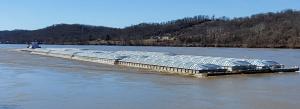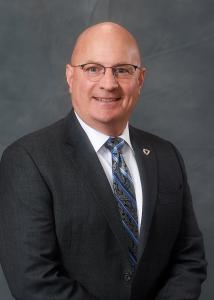ESG Objectives Play a Critical Role In Real Estate Site Selection Criteria
NAI Spring’s Bryce Custer, Broker Throughout the Ohio River Corridor for Plastics and Energy Companies Provides Overview of ESG factors in Site Selection
— Bryce Custer, SIOR, CCIM
WEIRTON, WEST VIRGINIA, USA, March 9, 2022 /EINPresswire.com/ — More than ever before, investors and other corporate stakeholders are being held accountable to environmental, social and governance (ESG) matters.
ESG describes a set of factors used to measure the non-financial impacts of specific investments and company’s objectives.
The three categories of ESG are increasingly integrated into investment analysis, processes, and decision-making:
• The “E” captures energy efficiencies, carbon footprints, greenhouse gas emissions, deforestation, biodiversity, climate change, and pollution mitigation, waste management, and water usage.
• The “S” covers labor standards, wages and benefits, workplace and board diversity, racial justice, pay equity, human rights, talent management, community relations, privacy and data protection, health and safety, supply-chain management, and other human capital and social justice issues.
• The “G” covers the governing of the “E” and “S” categories, including corporate board composition and structure, strategic sustainability oversight and compliance, executive compensation, political contributions and lobbying, and bribery and corruption.
An ESG strategy is quickly becoming a determiner of success. Those who prioritize ESG will gain more opportunities, trust, loyalty, and investment capital. Those who let it fall by the wayside stand to cede a competitive advantage.
“Companies looking to expand operations in the U.S., while decreasing their supply chains resulting in decreased emissions realize they can boost their ESG “score” with investors, money lenders, etc. by building at the supply of raw materials and within a day’s drive of 70% of the United States Population.” said Bryce Custer, Broker in Ohio and West Virginia with NAI Spring.
Where have companies found labor, low-cost real estate, proximity to polyethylene (Shell Polymers to begin production 2022) and infrastructure including rail, highway and barge?
The Ohio River Corridor. Ohio River properties throughout southeastern Ohio and West Virginia are becoming primary and secondary locations for national and international companies.
The corridor, running from river tributaries near Pittsburgh, to southern Ohio, rapidly is building on its legacy as a hotbed for manufacturing companies.
Former river front steel mills and power plant properties are being repurposed and adapted for environmentally responsible companies utilizing the river and rail infrastructure in accordance with their ESG goals and objectives.
And as for steel, Nucor announced in January it will build its $2.7 billion, state-of-the-art sheet mill in the Corridor, in Mason County, WV.
The West Virginia location on the Ohio River provides Nucor with transportation and logistics advantages. The new mill will be able to produce three million tons of steel annually and is expected to open in 2024.
Another plastics-related plus for the Corridor is Shell wrapping up construction of its $6 billion ethane cracker and associated polyethylene facilities 30 miles northwest of Pittsburgh to lower transportation costs to its numerous polyethylene customers within 700 miles of the Western Pennsylvania project.
Another positive for investing in the Corridor plans for a natural gas liquids (the basis of plastics) “hub” in the Appalachian Basin has funding embedded in the Biden Administration’s infrastructure bill.
Combining the hub, the cracker, the new steel mill, and inexpensive river transportation, with available property in the Corridor and states willing to assist major employers expand/locate in their jurisdictions makes the Corridor a huge asset to tap.
“The Ohio River Corridor has key site selection criteria for manufacturing. We are sitting on top of Utica and Marcellus Shale natural gas used for the generation of clean electricity. Shell Polymers will be utilizing ethane for the production of polyethylene on the Ohio River. Nucor Steel producing sheet mill in West Virginia along the Ohio River. Our location puts companies at the raw materials within a day’s drive of the majority of customer base. All these factors reduce truck and rail logistics thereby reducing emissions for the overall Supply Chain.” said Custer.
Global management consulting firm McKinsey & Co. has found ESG links to a company’s cash flow in five ways: (1) facilitating top-line growth; (2) reducing costs; (3) minimizing regulatory and legal interventions; (4) increasing employee productivity; and (5) optimizing investment and capital expenditures.
There are several types of ESG-related loans available for developers, especially those interested in sustainable real estate. Two such loans are green loans and sustainability-linked loans.
Green loans are strictly for green projects and usually have a discounted interest rate compared to standard loans. Sustainability-linked loans are intended to support sustainable businesses, but the funds may be used for whatever the borrower deems necessary.
They also differ from green loans as they have a floating interest rate, which decreases when the borrower meets certain sustainable objectives.
These loan packages with lower interest rates can translate to hundreds of thousands of dollars in savings for a developer and provide a sufficient economic incentive to take environment-related actions.
In 2020 alone, there was over $7.5 billion in green loans and almost $6.5 billion in sustainability-linked loans.
And remember: Any company looking to grow must keep ESG in the center of its thinking if it wants to be successful.
Net flows into ESG funds available to U.S. investors have skyrocketed, capturing $51.1 billion of net new money from investors in 2020 — the fifth consecutive annual record, according to Morningstar. In 2019, investors invested $20.6 billion into funds that apply ESG principles.
“Now is time to explore the opportunities the Ohio River Corridor provide. River front property is in high demand with a finite amount available.” said Custer.
For additional information and updates on petrochemical, energy, plastics and polymers throughout the Ohio and West Virginia area, contact Bryce Custer at (330) 418-9287 or [email protected].
Bryce Custer, SIOR, CCIM has been working with clients throughout the Ohio River Corridor with sales/leasing of properties and terminal operations. Custer has been actively involved with site selection for natural gas power plants and manufacturing facilities throughout Ohio and West Virginia. Custer is a licensed commercial real estate broker with NAI Spring in Ohio and West Virginia and our affiliation with NAI Global provides us the opportunities to service clients worldwide.
Bryce A Custer
NAI Spring / Ohio River Corridor, LLC
+1 330-418-2987
Bryce A Custer
Ohio River Corridor, LLC
+1 3304189287
email us here
Visit us on social media:
Facebook
LinkedIn
![]()
Read More: ESG Objectives Play a Critical Role In Real Estate Site Selection Criteria




